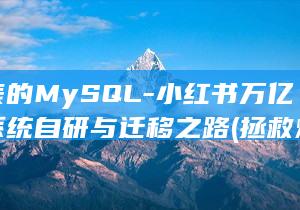优雅的前端国际化实现指南-b-b (时尚的前端)
Internationalization (i18n) is the process of adapting software applications and content to different languages and cultures. For front-end development, there are a variety of JavaScript libraries available to assist with i18n. In this article, we will explore some of the most popular ones.
i18next
i18next is a JavaScript framework for internationalization. It provides standard i18n features such as plurals, context, interpolation, and formatting. It also offers a complete solution for localizing products from web to mobile and desktop.
The i18next community has created integrations for frameworks such as React, Angular, Vue.js, and Next.js. i18next can also be used with platforms like Node.js, Deno, and more.
React Intl
React Intl is built on top of JavaScript's Intl API and provides an enhanced API and components for React. It uses React context and provides higher-order components to handle dynamic loading of language modules.
Vue I18n
Vue I18n is an internationalization plugin for Vue.js. It makes it easy to integrate localization functionality into Vue.js applications. Vue I18n is the preferred choice for internationalization in Vue projects and its author, kazupon, is a core team member of Vue.
next-translate
next-translate's primary goal is to make translations as straightforward as possible in the Next.js ecosystem. It consists of two parts: a Next.js plugin and an i18n API. next-translate features:
- Automatic page revalidation when the language changes
- File system and cloud-based translation support
- Built-in language detection and switching
FBT
FBT is a JavaScript internationalization framework that is both powerful and flexible, yet simple and straightforward. It helps organize translatable source text and write syntactically correct, translatable user interfaces.
Lingui
Lingui is a simple and powerful internationalization framework. It features:
- Support for multiple catalogs and languages
- Automatic extraction of translatable strings from code
- Built-in support for plurals, contexts, and interpolations

Conclusion
Choosing the right JavaScript library for internationalization depends on the specific requirements of your project. Each library offers its own unique strengths and features. By understanding the key features and capabilities of these libraries, you can make an informed decision and choose the one that best meets the needs of your application.
如何使用C#实现B/S架构软件开发
1、概念:B/S结构即浏览器和服务器结构。它是随着Internet技术的兴起,对C/S结构的一种变化或者改进的结构。在这种结构下,用户工作界面是通过WWW浏览器来实现,极少部分事务逻辑在前端(Browser)实现,但是主要事务逻辑在服务器端(Server实现,形成所谓三层3-tier结构。B/S结构是WEB兴起后的一种网络结构模式,WEB浏览器是客户端最主要的应用软件。这种模式统一了客户端,将系统功能实现的核心部分集中到服务器上,简化了系统的开发、维护和使用。客户机上只要安装一个浏览器(Browser),如Netscape Navigator或Internet Explorer,服务器安装Oracle、Sybase、Informix或SQL Server等数据库。浏览器通过Web Server同数据库进行数据交互。 这样就大大简化了客户端电脑载荷,减轻了系统维护与升级的成本和工作量,降低了用户的总体成本(TCO)。
2、优势与劣势
2、1维护和升级
软件系统的改进和升级越来越频繁,B/S架构的产品明显体现着更为方便的特性。对一个稍微大一点单位来说,系统管理人员如果需要在几百甚至上千部电脑之间来回奔跑,效率和工作量是可想而知的,但B/S架构的软件只需要管理服务器就行了,所有的客户端只是浏览器,根本不需要做任何的维护。无论用户的规模有多大,有多少分支机构都不会增加任何维护升级的工作量,所有的操作只需要针对服务器进行;如果是异地,只需要把服务器连接专网即可,实现远程维护、升级和共享。所以客户机越来越“瘦”,而服务器越来越“胖”是将来信息化发展的主流方向。今后,软件升级和维护会越来越容易,而使用起来会越来越简单,这对用户人力、物力、时间、费用的节省是显而易见的,惊人的。因此,维护和升级革命的方式是“瘦”客户机,“胖”服务器。
2.2成本与选择
大家都知道windows在桌面电脑上几乎一统天下,浏览器成为了标准配置。但在服务器操作上,windows并不是处于绝对的统治地位。软件的趋势是凡使用B/S架构的应用管理软件,只需安装在Linux服务器上即可,而且安全性高。所以服务器操作系统的选择是很多的,不管选用那种操作系统都可以让大部分人使用windows作为桌面操作系统电脑不受影响,这就使得最流行免费的Linux操作系统快速发展起来,Linux除了操作系统是免费的以外,连数据库也是免费的,这种选择非常盛行。
2、3负荷重
由于B/S架构管理软件只安装在服务器端(Server)上,网络管理人员只需要管理服务器就行了,用户界面主要事务逻辑在服务器(Server)端完全通过WWW浏览器实现,极少部分事务逻辑在前端(Browser)实现,所有的客户端只有浏览器,网络管理人员只需要做硬件维护。但是,应用服务器运行数据负荷较重,一旦发生服务器“崩溃”等问题,后果不堪设想。因此,许多单位都备有数据库存储服务器,以防万一。
web前端和后端是不是指B/S架构?
可以这么说。bs架构就是:B=浏览器,S服务器。关于前端和后端的解释(针对于工作岗位)前端在大部分企业就是做浏览器端展现相关的工作,会用到html,css,js,ps,ai等等,总之就是和界面相关的东西。
而“后端”的主要工作室程序开发、数据处理了,比如:php,asp,mysql,mssql。主要实现功能上的东西,如用户登录验证、图片上传处理,等等。
免责声明:本文转载或采集自网络,版权归原作者所有。本网站刊发此文旨在传递更多信息,并不代表本网赞同其观点和对其真实性负责。如涉及版权、内容等问题,请联系本网,我们将在第一时间删除。同时,本网站不对所刊发内容的准确性、真实性、完整性、及时性、原创性等进行保证,请读者仅作参考,并请自行核实相关内容。对于因使用或依赖本文内容所产生的任何直接或间接损失,本网站不承担任何责任。











